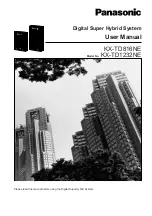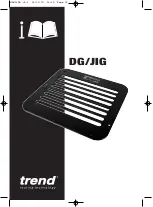
brake relay valve (Figure 16), which is typically located
near the master cylinder. There should be one or more
open ports with threaded plugs (Figure 16).
if the motorhome has air over hydraulic brakes
—
find the main brake air booster housing (Figure 17), which
is typically located near the front axle. There should be
an open plug (Figure 17) threaded into the air booster
housing.
4.
Test to verify that you have located the correct port
(an assistant will be necessary for this test, to press and
release the motorhome brake pedal)…
the air brake system contains pressurized air,
which may cause severe eye or ear injury when it is
released. Wear appropriate eye and ear protection
before loosening any plugs, and while attaching the
air line.
5.
First, slowly loosen the plug — do not remove it en-
tirely. Then instruct the assistant to depress the motor-
home brake pedal several times. Pressurized air should
escape from the port each time the brake pedal is de-
pressed.
If pressurized air is only released when the brake
pedal is depressed, you have located a port to attach the
BrakeMaster air line.
6.
Turn the motorhome engine off. Remove the original
fitting from the port, and thread the appropriate-sized
fitting (½" and 3/8" fittings are provided) into the port.
Use a liquid Teflon
®
sealant to seal the pipe threads
(Do not use liquid Teflon on any compression fittings).
Proceed to step 8 (below).
7. if an open port is not available
— Not all relay
valves or air booster housings will have an empty port
available. If this is the case, the BrakeMaster air line
continued on next page
inStAll the motoRhome AiR line
12
There are three possible connection points for the
motorhome air line —
•
If the motorhome has air brakes, the line can be
attached to an open port at the air brake relay valve.
•
If the motorhome has air over hydraulic brakes, the
line can be attached to an open port at the main brake
air booster housing.
•
If there is no open port, a tee must be used.
In this step, you will attach the motorhome air line
at one of these three points, then route it to the rear
of the motorhome.
1.
Support and block the motorhome. Then, release
the parking brake.
the motorhome must be safely and securely sup-
ported and blocked.
With the parking brake released, the motorhome
may unexpectedly roll forward or backward, espe-
cially if it is on an incline, if it is not blocked.
if the motorhome is equipped with an air suspen-
sion system and a line to the air suspension system
is inadvertently opened, or if the motorhome’s air
suspension system is turned off, the motorhome
will lower to the ground.
failure to follow these instructions may cause
property damage, personal injury or even death.
the motorhome’s parking brake must be released,
in order to test and identify the correct port.
if an incorrect port is chosen, the motorhome
brake system will be severely damaged. A brake fire
or other non-warranty damage may also occur.
2.
Start the motorhome engine and allow the air brake
system to completely charge up to operating pressure.
3. if the motorhome has air brakes
— find the air
figure 17
figure 16
Summary of Contents for BrakeMaster 9100
Page 4: ...2...










































